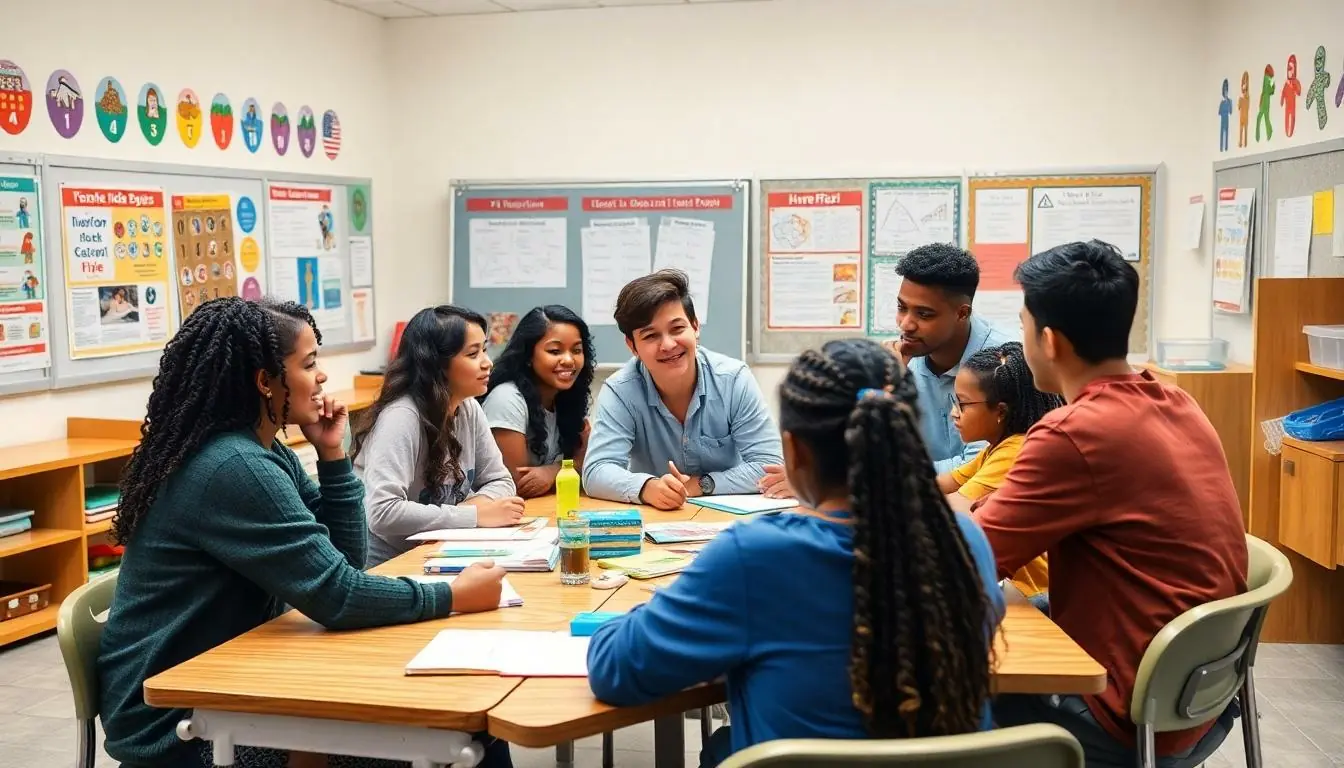In the grand arena of public education, the battle between equality and equity rages on like a never-ending game of tug-of-war. On one side, equality waves its banner, promising every student the same resources, like handing out identical lunchboxes at a potluck. On the other, equity steps up, insisting that some kids need extra help—because let’s face it, not everyone can thrive on the same cookie-cutter approach.
Navigating this complex landscape isn’t just a challenge; it’s a necessity. As educators and policymakers grapple with these concepts, they’re faced with the question: how do we ensure that every child gets what they truly need to succeed? It’s time to dive into this crucial conversation, where understanding the difference between equality and equity could mean the difference between a fair shot and a fair mess.
Table of Contents
ToggleUnderstanding Equality and Equity in Public Education
Educators and policymakers face the challenge of balancing equality and equity in public education. Understanding these concepts is crucial for fostering an inclusive learning environment.
Defining Equality in Education
Equality in education means providing the same resources to every student regardless of their background. It strives for uniform distribution of funding, facilities, and instructional materials. All students, in this framework, receive the same opportunities to succeed academically. Standard assessments are often utilized to gauge performance in this context. While equality aims to eliminate disparities, it may overlook individual needs and challenges faced by students. This approach generally operates under the assumption that all students start from the same place, ignoring differing circumstances that can influence educational outcomes.
Defining Equity in Education
Equity in education recognizes that students come with varying needs and circumstances requiring tailored support. This approach emphasizes distributing resources in a way that accounts for those differences. Additional funding, specialized programs, and targeted interventions often serve students who face obstacles, such as poverty or learning disabilities. By focusing on providing what each student needs to thrive, equity aims to level the playing field. Advocacy for equity leads to initiatives that promote social justice and equal opportunities for all learners. Ensuring every student can access necessary support ultimately enhances overall educational effectiveness.
The Importance of Reconciliation

Reconciliation of equality and equity in public education influences student success and social development. Understanding the unique needs of students fosters meaningful educational experiences.
Impact on Student Outcomes
Effectively reconciling equity and equality leads to better student outcomes. Tailoring resources to individual needs enhances engagement and learning. Schools that adopt an equitable approach see improved academic performance among disadvantaged groups. Research from the National Center for Education Statistics shows that students who receive tailored support demonstrate higher graduation rates. Not only do these initiatives foster a positive learning environment, they also help close achievement gaps.
Societal Implications
The reconciliation of equality and equity holds significant societal implications. A fair education system promotes social cohesion and equal opportunities. A well-rounded educational approach contributes to a more skilled workforce. Communities thrive when all individuals receive necessary support to succeed. According to the Economic Policy Institute, investing in equitable education yields long-term economic benefits, reducing poverty and enhancing social mobility. Strong educational frameworks contribute to a democratic and just society, where every member can participate fully.
Strategies for Balancing Equality and Equity
Balancing equality and equity in public education involves various strategies that ensure all students receive necessary support while maintaining fairness. Effective implementation relies on understanding unique student needs and community dynamics.
Policy Approaches
Policy strategies play a critical role in achieving a balance between equality and equity. Educators can support equitable funding formulas that allocate resources based on specific student needs rather than merely equal distributions. Comprehensive needs assessments help in identifying students requiring additional support. Furthermore, implementing programs that target low-income or marginalized communities ensures a more inclusive educational experience. Schools could consider adopting practices like differentiated instruction, allowing teachers to tailor their methods to varying student abilities. Regular evaluations of policies can help in adjusting strategies based on effectiveness, promoting continuous improvement.
Community Involvement
Community involvement enhances efforts to address the challenges of equality and equity. Engaging parents and local organizations creates a support network offering resources and advocacy for students. Initiatives that foster collaboration between schools and community groups can lead to more tailored educational programs. Involvement in decision-making processes empowers families, ensuring voices are heard. Schools can establish partnerships that leverage community resources, such as mentoring programs or after-school activities, to support students’ diverse needs. Active participation facilitates a more comprehensive understanding of community-specific challenges, fostering an inclusive educational environment.
Case Studies
Examining case studies reveals how various approaches to equality and equity impact public education outcomes. These examples illustrate real-world applications of educational strategies.
Successful Examples
Many schools have implemented successful equity-focused strategies. One notable case involves a district in Massachusetts, where funding allocation was based on student need. This adjusted distribution led to improved resources for low-income schools, resulting in a graduate rate increase of 15%. Additionally, another example comes from a California middle school that introduced personalized learning plans. These plans tailored instruction to individual student needs, significantly enhancing academic performance. Schools with heightened parental engagement also saw positive outcomes, with community-led initiatives fostering an inclusive environment. These successful examples underscore the potential benefits of equity in educational systems.
Challenges Faced
Despite the benefits, schools encounter significant challenges in balancing equality and equity. Budget constraints often limit the extent to which resources can be redistributed. Many districts grapple with resistance to change, as stakeholders may prioritize equal funding across schools over targeted support. Additionally, implementing effective needs assessments can be resource-intensive and complex, leading to inaccurate representations of student requirements. Schools also struggle with ensuring consistent engagement from parents and communities, which is essential for successful equity initiatives. Addressing these challenges remains critical for creating a genuinely equitable education system.
Reconciliation of equality and equity in public education is essential for fostering a fair and effective learning environment. By recognizing the diverse needs of students and implementing tailored support systems, schools can significantly enhance educational outcomes. This approach not only addresses individual challenges but also promotes social justice and equal opportunities.
The impact extends beyond the classroom, contributing to stronger communities and a more equitable society. As educators and policymakers continue to navigate these complexities, collaboration with families and local organizations will be vital in creating inclusive educational experiences. Ultimately, prioritizing both equality and equity will pave the way for a brighter future for all students.





